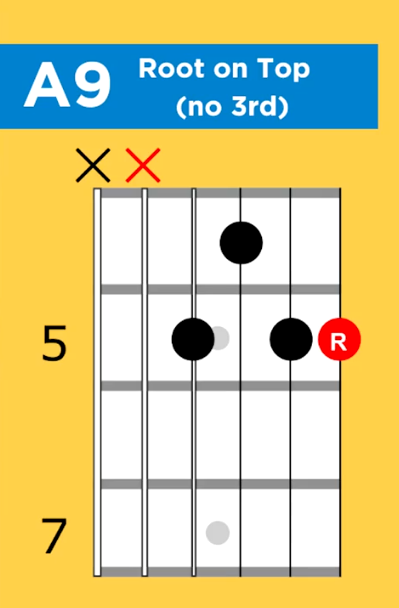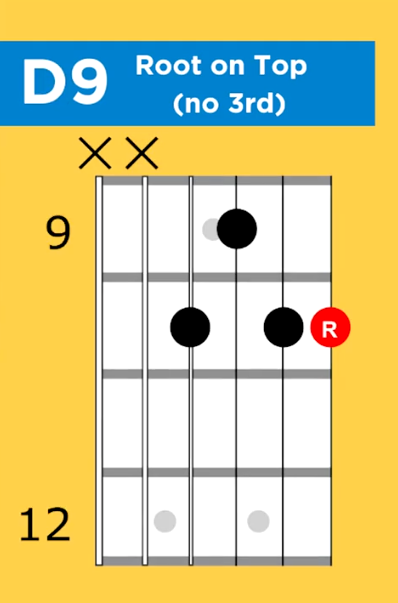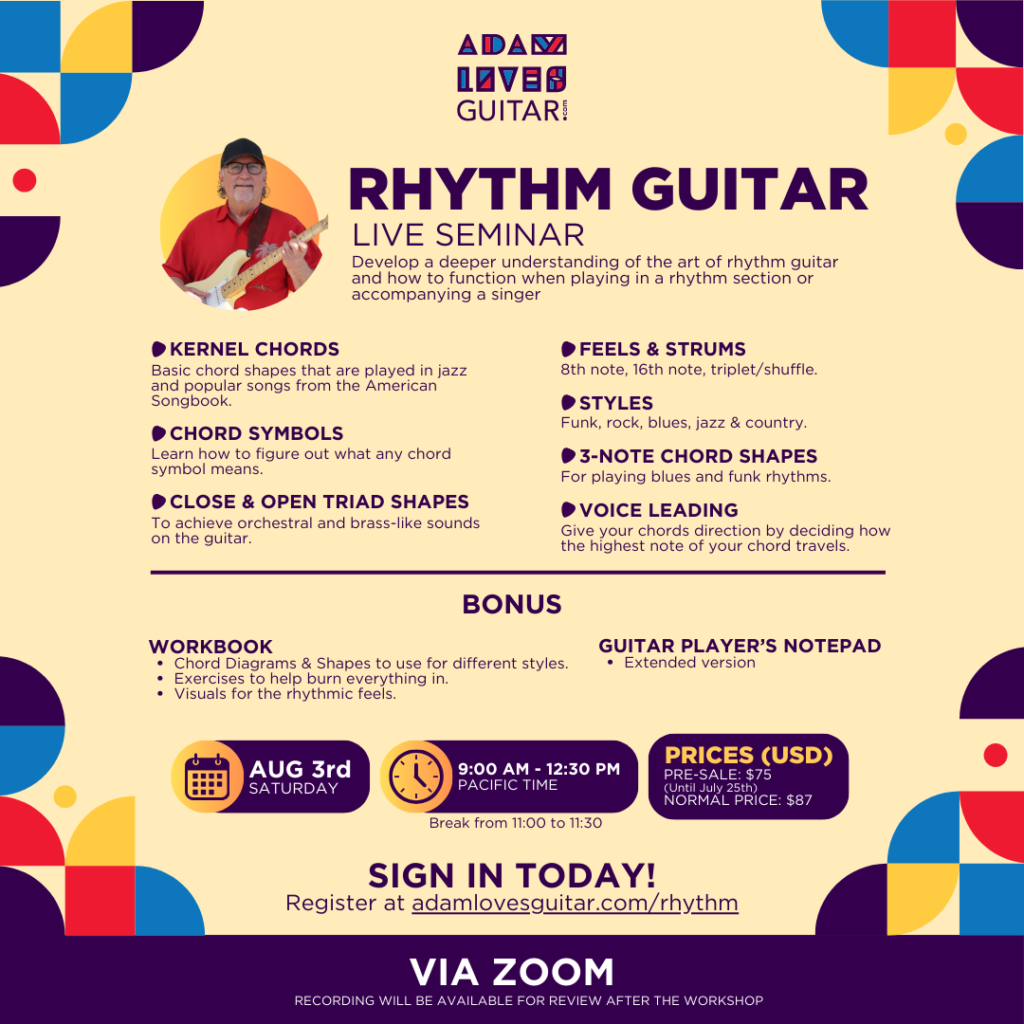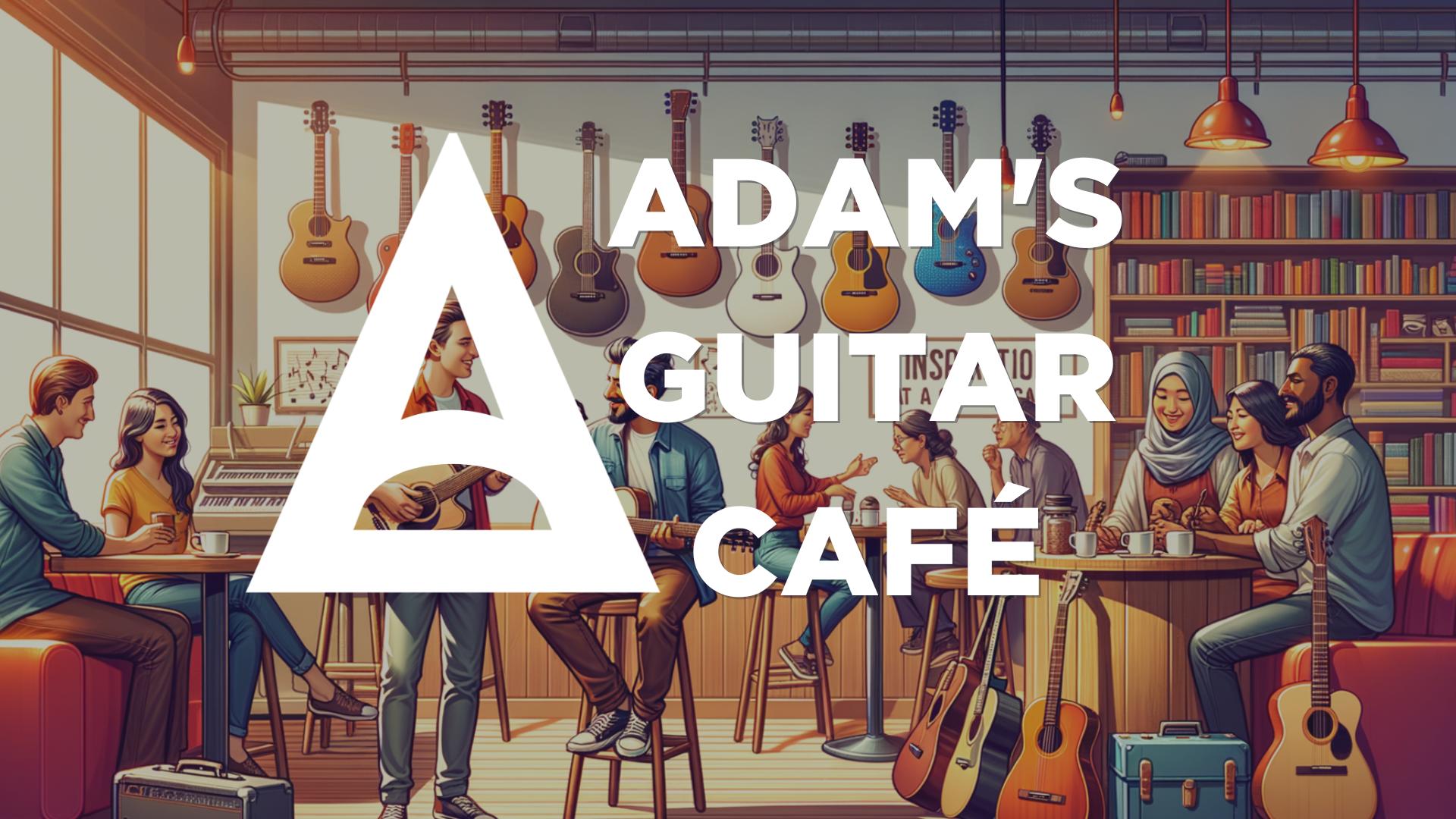Hey there, fellow guitar enthusiasts! Are you ready to elevate your blues rhythm guitar playing to the next level? 🎶
In my latest video, I shared some game-changing tips on creating exciting rhythm guitar dynamics using just four chord shapes. Today, I’m going to sum up those tips right here in this blog post so you can start applying them immediately!
Imagine this: The drums are kicking, the vocalist starts singing, and the other guitarist is strumming their guitar with that familiar “dum du-dumdum” blues beat. How can you add to this musical conversation?
Think of an orchestra. Orchestras use their wide range of sounds to create dynamic, engaging music. You have a deep cello conversing with a high, dramatic violin, and then some sharp horns kick in to add a different flavor. When playing with other musicians, you can apply the same concept by thinking of yourself as part of this musical dialogue.
If the other guitarist is strumming a calm pattern in the middle register, imagine yourself as the horn section! Accentuate the higher string sets in your strums and create punchy, stabby chords to complement the existing groove. This adds a fresh, dynamic layer to the overall sound.
To truly make the most out of four chord shapes, you need to master them! Focus on the root note you need and practice its third, fifth, and flat seven voicings. These will be your go-to shapes.
For example, if you’re working with an A7 chord, make sure you know how to play it with the root, third, fifth, and flat seven on top. This gives you the flexibility to add variety to your rhythm playing and keeps your sound fresh and interesting.
Start by internalizing these four chord shapes and play around with them:
Pay close attention to the highest note in your chords! Think of a song where the same note is repeated over and over before something finally changes. I call this the “bow and arrow effect”: you create tension by repeating the same note — perhaps with different intent — and then release it.
Alternatively, consider how a song feels when it ascends. You can create that same sensation by using one chord shape but changing the highest note. Maybe it’s the root once, and then the third, fifth, or flat seven next. This slight alteration can make a big difference in the mood and excitement of your progression.
Decide if you want your progression to move upward, downward, or stay on the same note. This simple decision will add a sense of direction and excitement to your playing, making it more engaging for both you and your audience.
For example, play with the order of these:



Join our Rhythm Guitar Seminar and transform your playing. Whether you’re a beginner looking to build a strong foundation or an advanced player aiming to refine your technique, this seminar is designed to elevate your rhythm guitar skills.

Keep strumming, keep learning, and keep having fun!
Rock on,
Adam Levine
P.S. Don’t forget to subscribe to the channel for more awesome guitar tips and tricks! 🎸
I hope you find these tips helpful in your blues rhythm guitar journey. Feel free to leave a comment below with any questions or to share your progress. Happy playing!

Designed by TECCA